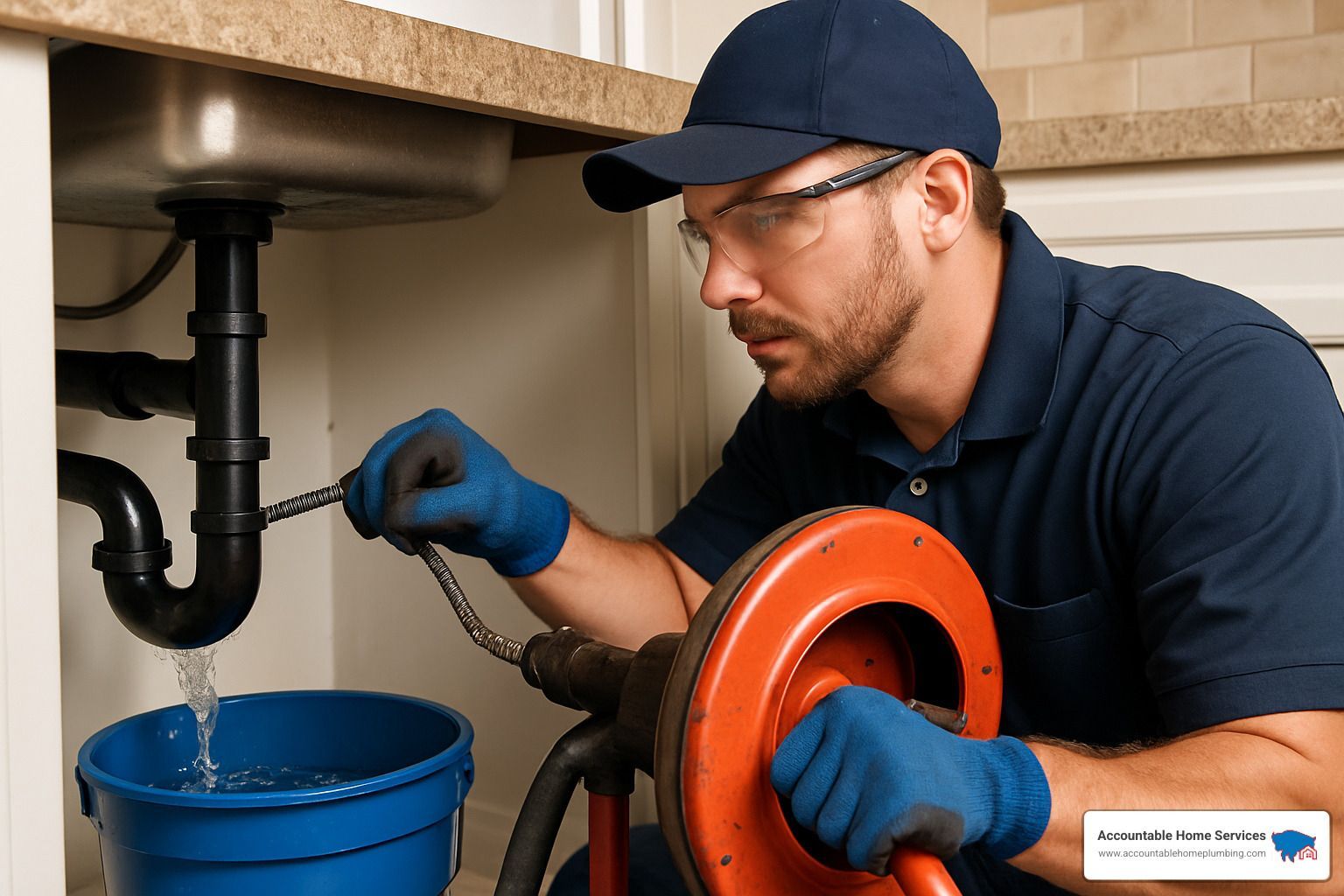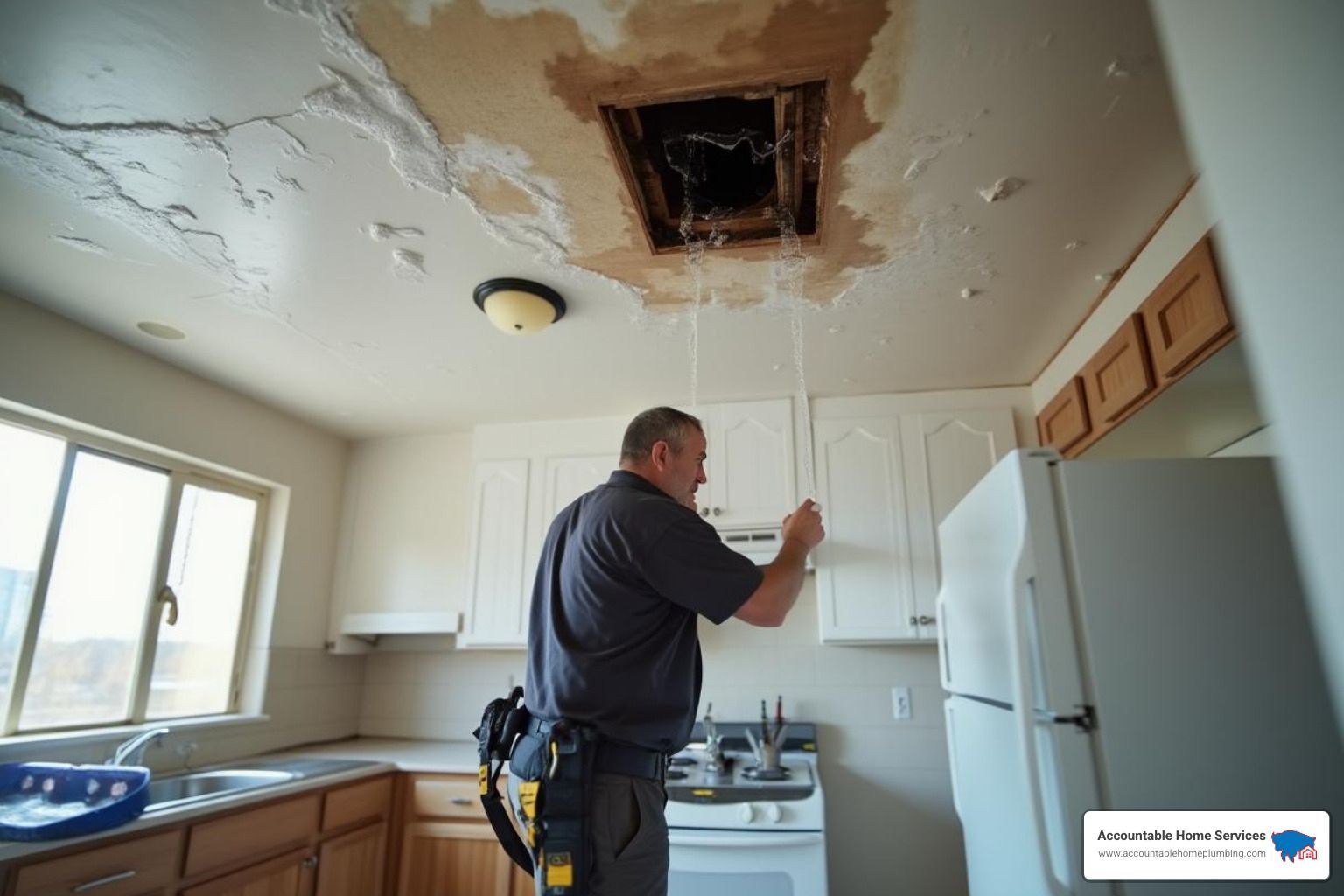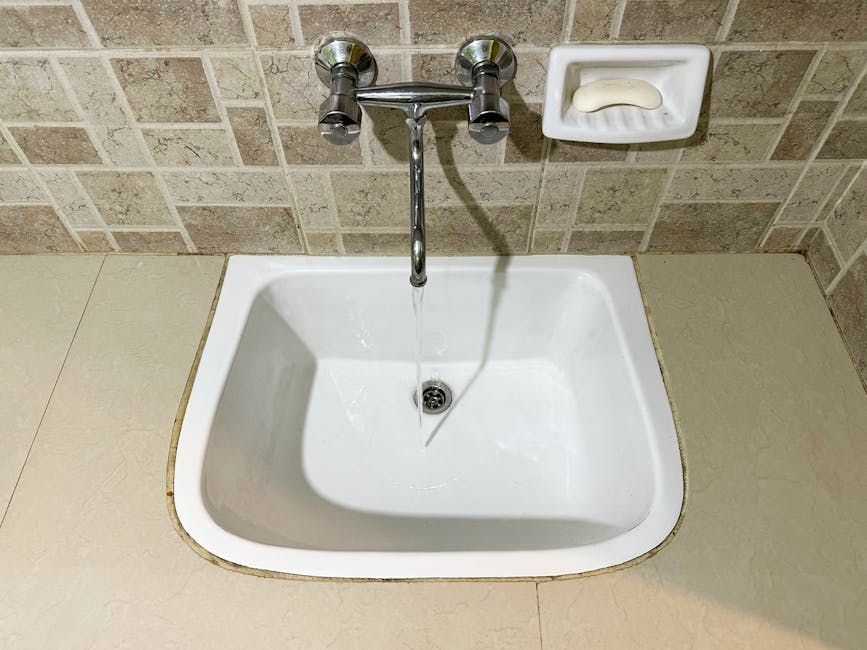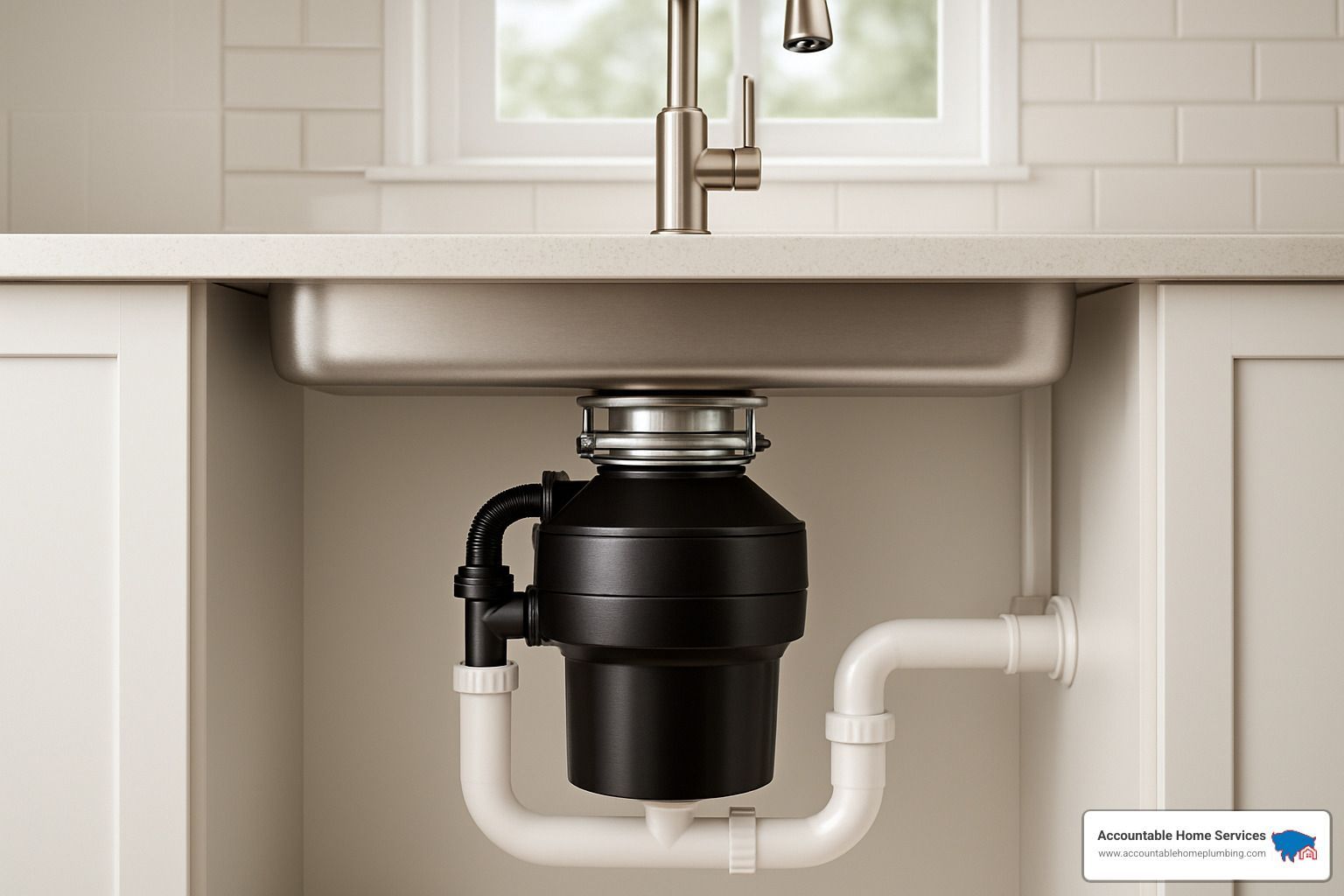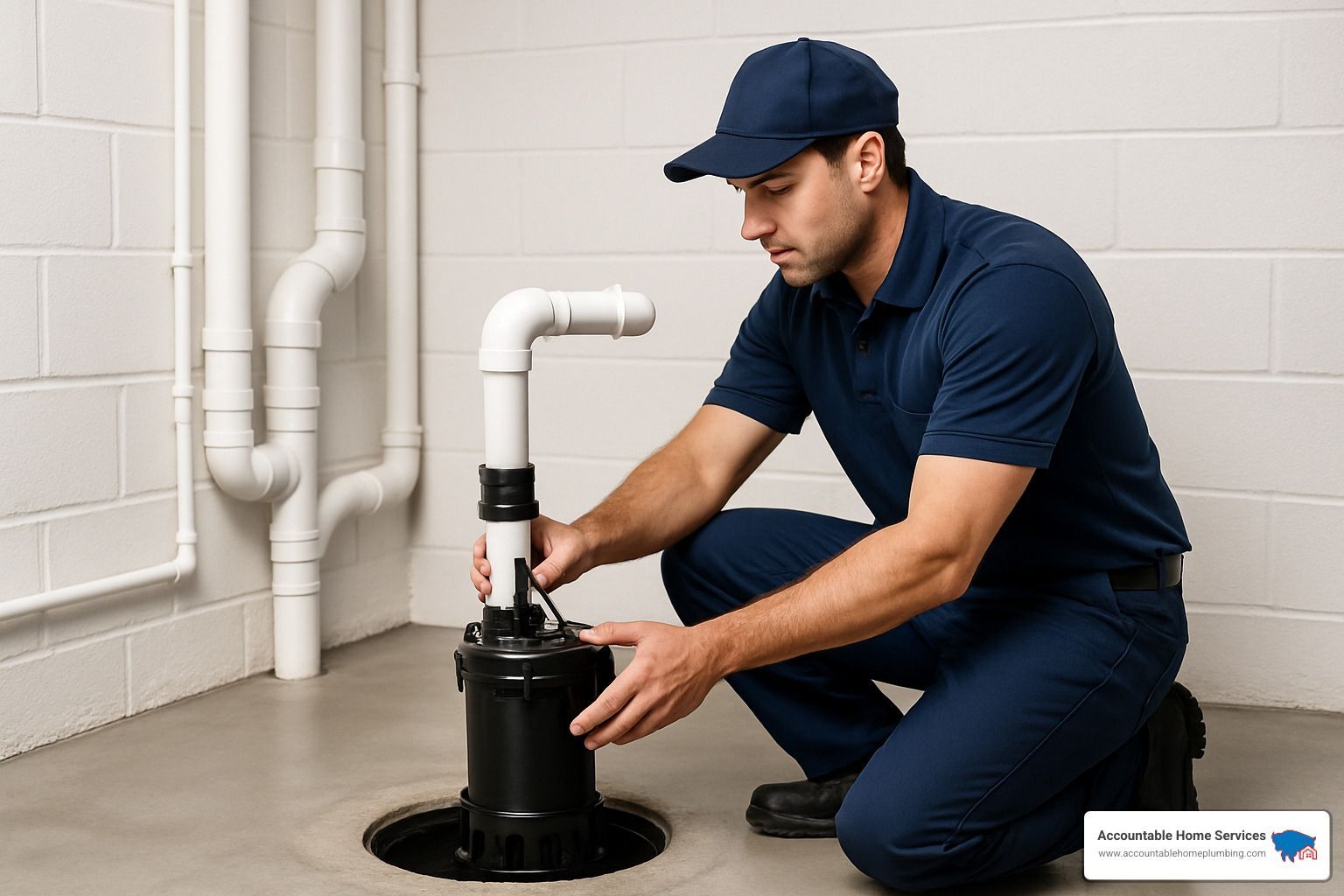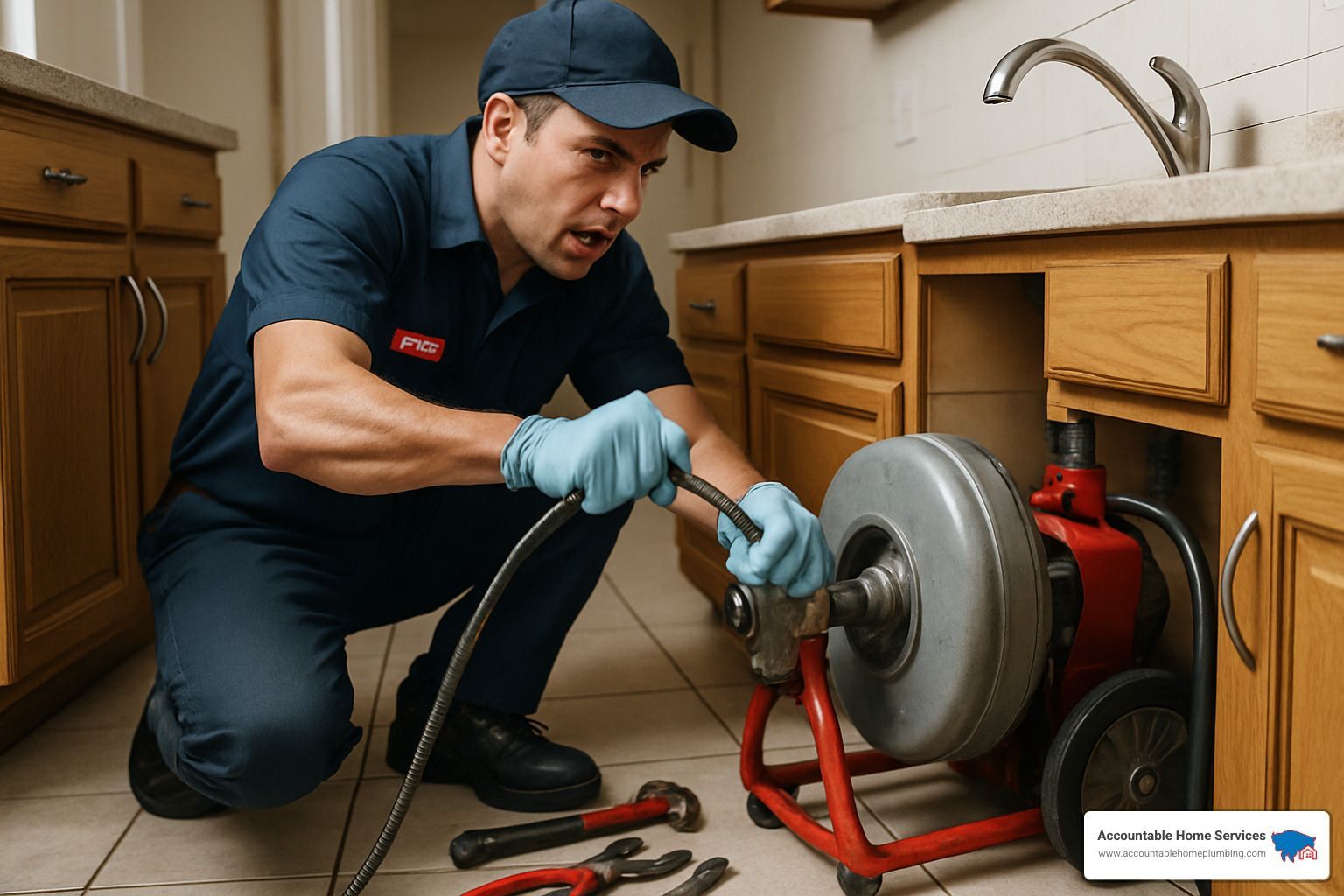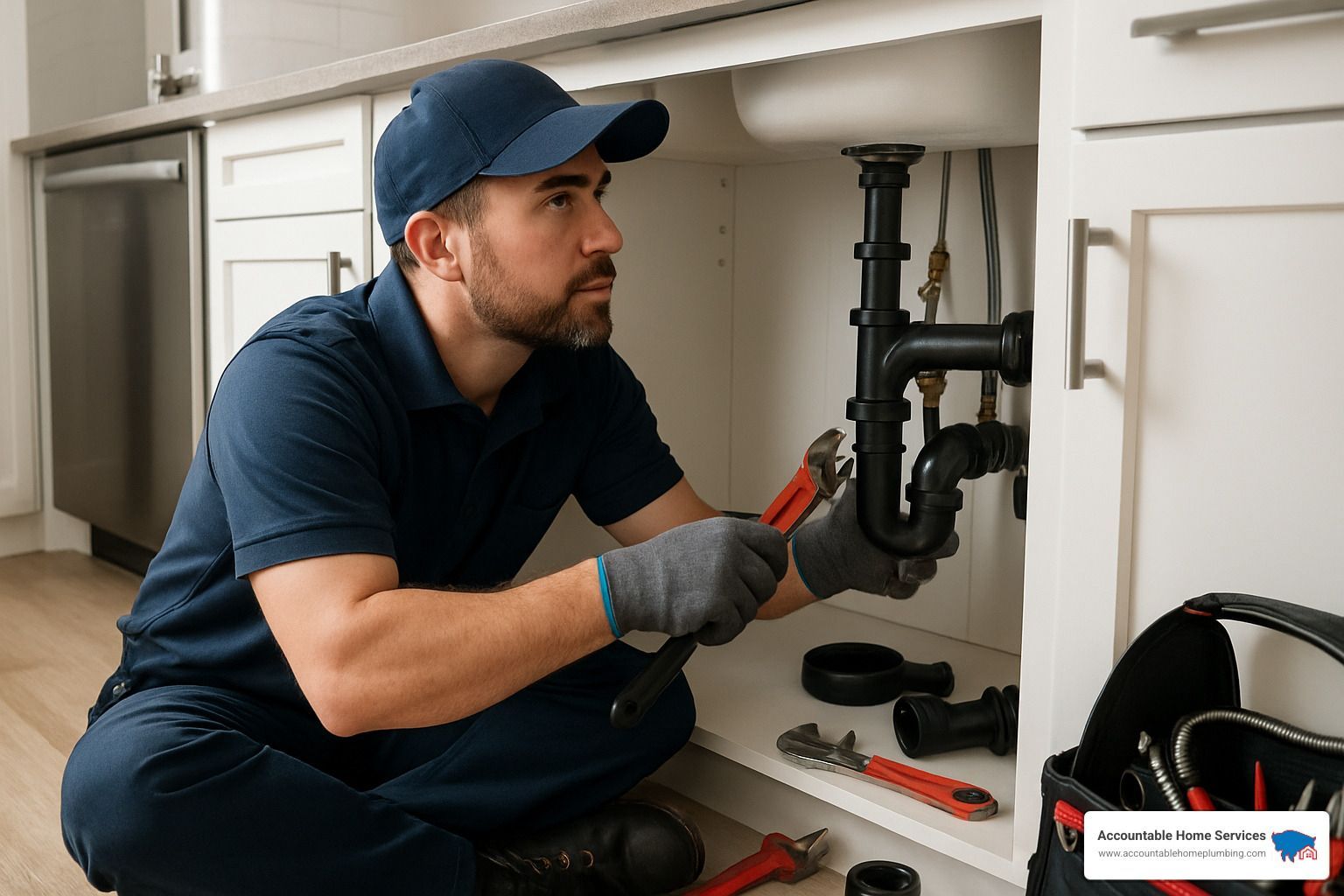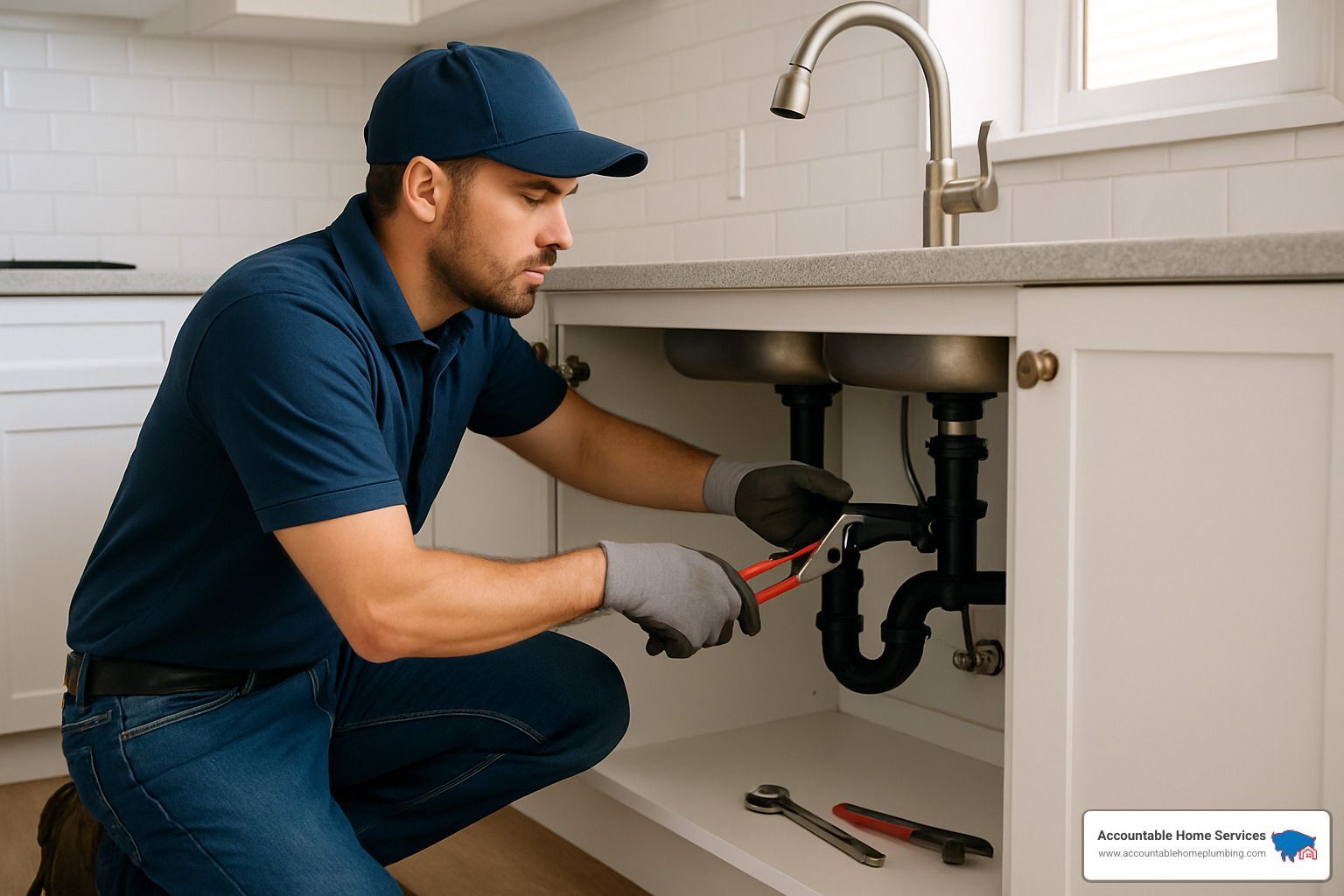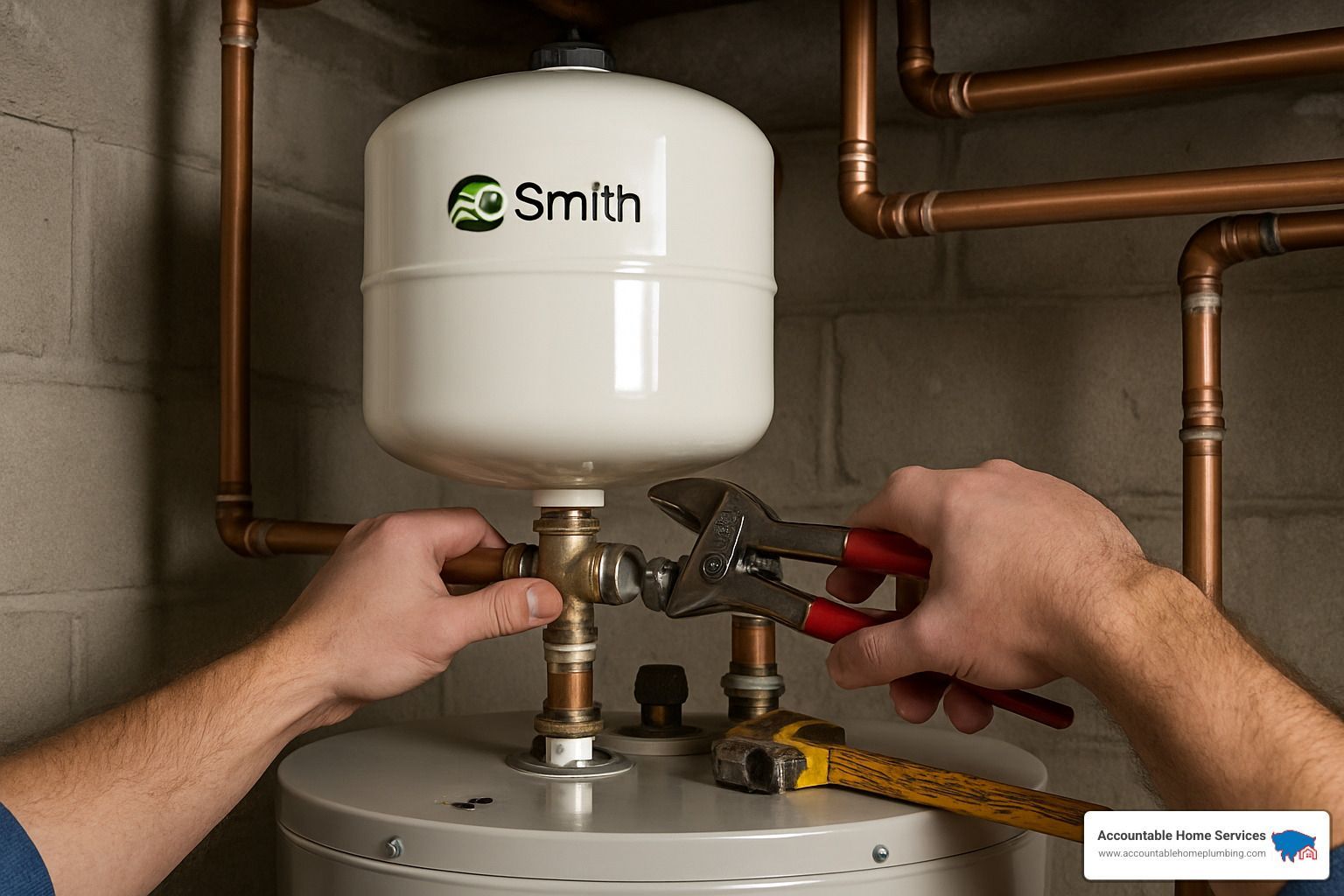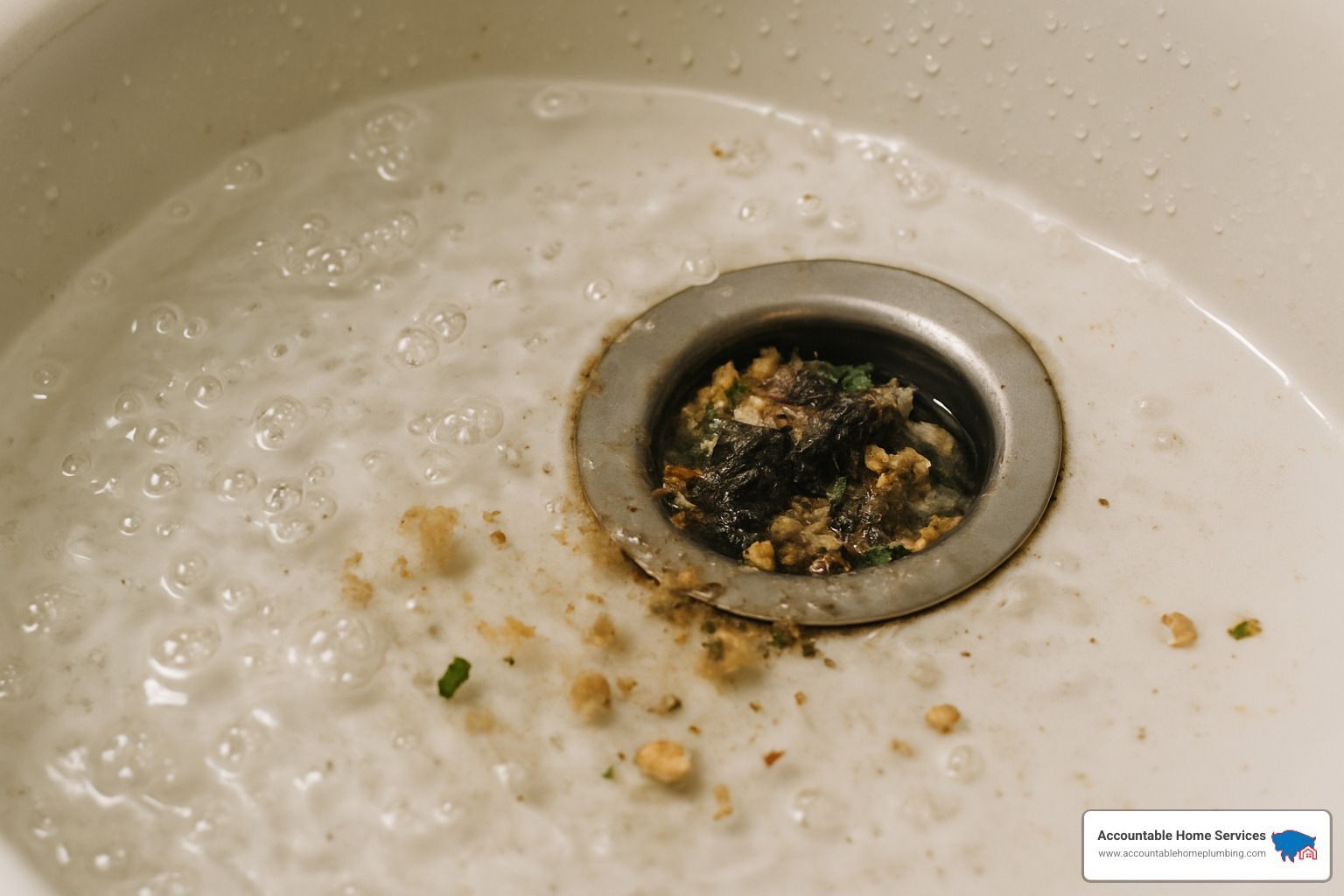Heat Up Your Outdoors: Installing a Tankless Water Heater
Outdoor tankless water heater installation offers a practical solution for homeowners seeking to maximize indoor space and access consistent hot water. These compact units are particularly appealing in areas like the Denver Metro, where saving indoor space and having energy-efficient solutions is a priority.
- Space-Saving: With the water heater placed outside, more room is available inside your home for living or storage.
- Energy Efficiency: Tankless water heaters only heat water as needed, leading to lower energy costs.
- Visual Appeal: Outdoor installation keeps unsightly equipment out of sight, maintaining the aesthetic of interior spaces.
When considering an outdoor tankless water heater installation, it's crucial to keep in mind the local climate and installation requirements to ensure optimal performance. These units are best suited for moderate climates but can be adapted for colder regions with proper insulation and weather-resistant models. Let’s dive deeper into the benefits and installation considerations in the sections that follow.
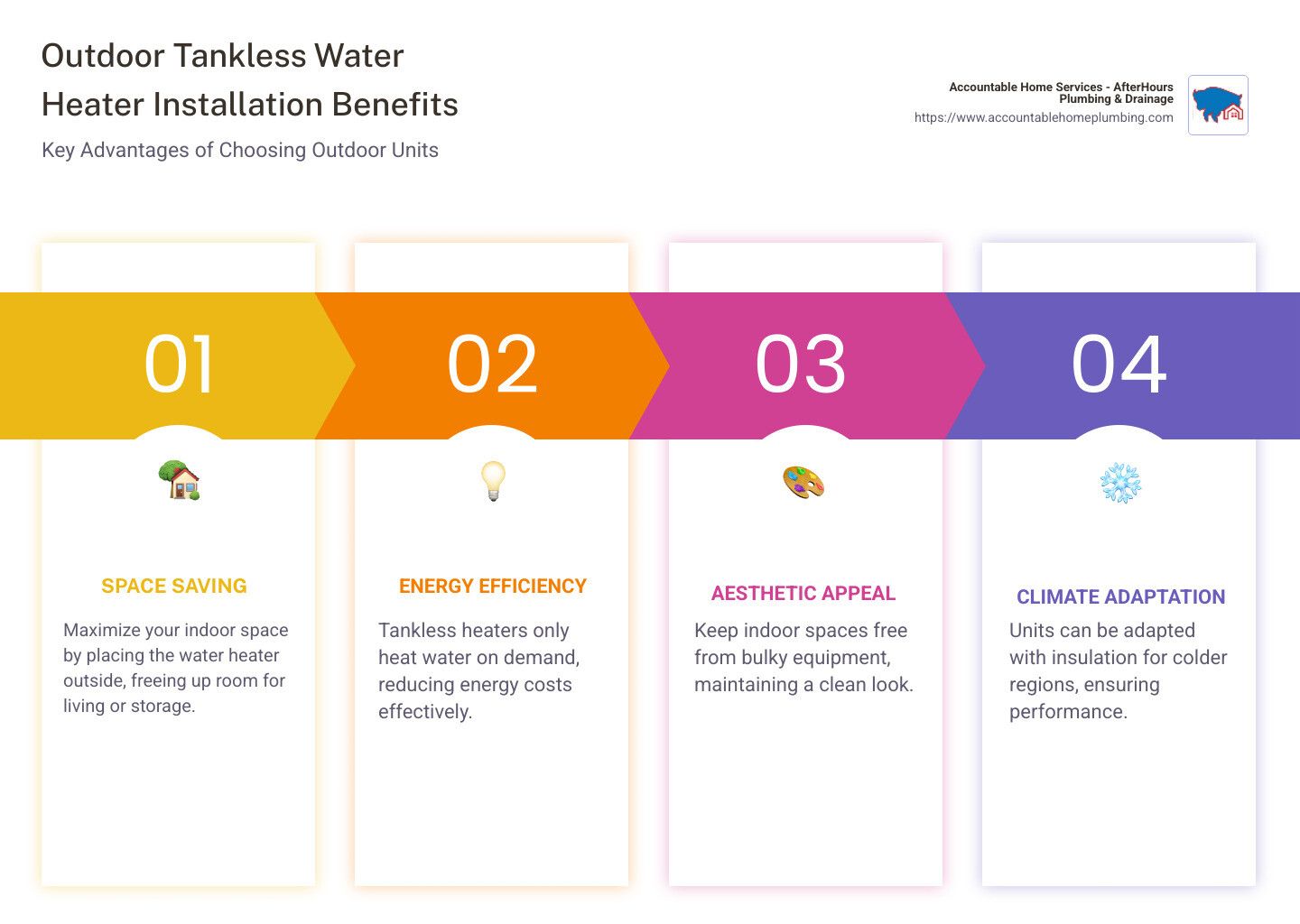
Benefits of Outdoor Tankless Water Heaters
Space-Saving
Installing a tankless water heater outdoors is a smart move for homeowners looking to free up indoor space. These units are compact, and placing them outside means you have more room inside for living or storage. Imagine converting that old water heater closet into a pantry or extra storage space!
Energy Efficiency
One of the standout features of tankless water heaters is their energy efficiency. Unlike traditional water heaters that keep a tank of water hot at all times, tankless models heat water only when needed. This on-demand approach can lead to significant energy savings. According to industry insights, these units can reduce energy consumption by up to 30%. That's good news for both your wallet and the environment!
Longevity
Tankless water heaters are built to last. While a traditional water heater might last 10 to 15 years, a tankless model can often exceed 20 years with proper maintenance. This extended lifespan means fewer replacements and less environmental waste. Investing in a tankless water heater is a long-term choice that pays off over time.
When considering outdoor tankless water heater installation, it's important to choose a unit designed for outdoor use and ensure it is properly installed to withstand weather conditions. In the next section, we’ll explore the installation requirements to ensure your investment works efficiently and safely.
Outdoor Tankless Water Heater Installation
Installation Requirements
Installing an outdoor tankless water heater requires careful planning to ensure safety and efficiency. Here are the key considerations:
Clearance Requirements
Proper clearance is crucial. Make sure the unit has enough space around it to allow for airflow and maintenance. This typically means leaving at least 24 inches of space around the unit. This clearance helps prevent overheating and makes maintenance easier.
Local Codes and Regulations
Before installation, check local building codes. Some areas have specific rules about where and how these units can be installed. For instance, in places like Denver, Colorado, regulations may require specific mounting or venting setups.
Gas Supplier Coordination
If your unit runs on gas, coordinate with your gas supplier. They can ensure your supply line is adequate and safe for the new installation. This step is crucial to prevent gas leaks and ensure efficient operation.
Mounting
Mount your tankless water heater securely on an exterior wall. Use brackets or mounts that are designed to withstand weather conditions. This ensures the unit stays in place during storms or high winds.
Venting Considerations
Electric vs. Gas
When it comes to venting, the type of heater matters. Electric tankless water heaters don't need venting, making them easier to install. Gas units, however, must vent exhaust gases safely away from living areas.
Venting Needs
For gas units, proper venting is non-negotiable. The venting system should direct gases away from the home, preventing carbon monoxide buildup. Consider self-venting models, which simplify installation by venting directly through the wall.
Moisture Protection
Outdoor units are exposed to the elements, so moisture protection is key. Ensure the unit is weatherproofed and protected from rain and snow. Insulating the pipes and using waterproof conduits for wiring can prevent damage from moisture.

When planning your outdoor tankless water heater installation, these requirements help ensure your system operates efficiently and safely, providing you with reliable hot water for years to come. In the next section, we'll look at common mistakes to avoid during installation.
Common Mistakes to Avoid
When setting up an outdoor tankless water heater, avoiding common pitfalls can save you time, money, and headaches down the road. Let's explore these potential mistakes and how to steer clear of them.
Moisture Exposure
One of the biggest threats to outdoor units is moisture. Rain, snow, and humidity can cause significant damage if your heater isn't properly protected. Ensure that your unit is designed for outdoor use and is installed with adequate weatherproofing.
Consider using a protective cover or housing to shield the unit from direct exposure to the elements. Insulating the pipes can also prevent freezing in colder climates, which is crucial in areas like Denver, where temperatures can drop significantly.
Improper Venting
For gas-powered tankless water heaters, venting is critical. An improper venting setup can lead to dangerous carbon monoxide buildup. Always follow the manufacturer's guidelines for venting, and if possible, opt for self-venting models that simplify the process by venting directly through the wall.
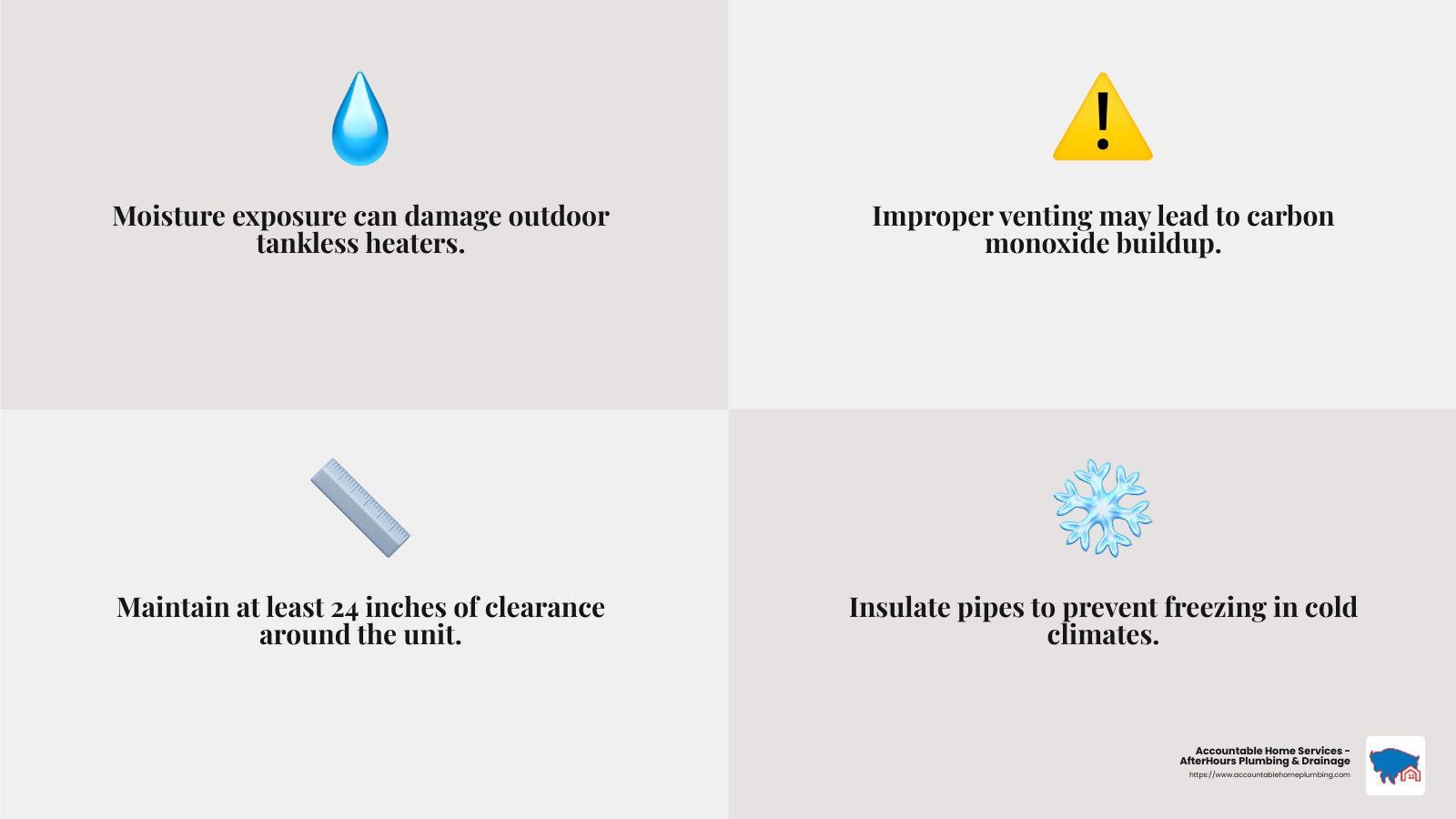
If you're unsure about the venting requirements, consulting with a professional installer can help ensure that your system is safe and compliant with local codes.
Inadequate Clearance
Failing to provide enough clearance around your tankless water heater can lead to overheating and maintenance difficulties. Make sure to leave at least 24 inches of space around the unit. This space allows for proper airflow and gives technicians room to work if maintenance is needed.
In areas with high winds, like those sometimes experienced in Boulder, ensuring the unit is securely mounted and has adequate clearance will help prevent damage from debris or movement.
By being mindful of these common mistakes during your outdoor tankless water heater installation, you can enjoy a more efficient and trouble-free system. In the following section, we'll address some frequently asked questions to help you get even more clarity on your setup.
Frequently Asked Questions about Outdoor Tankless Water Heater Installation
Can tankless water heaters be installed outside?
Yes, tankless water heaters can be installed outside, and doing so offers several benefits. Outdoor installation is particularly advantageous for smaller homes as it saves valuable indoor space. By placing the unit outside, you also reduce the risk of indoor water damage from leaks. However, it's crucial to choose a model specifically designed for outdoor use to withstand weather conditions.
Do outdoor tankless water heaters need venting?
Venting requirements depend on whether your tankless water heater is electric or gas. Electric models typically do not require venting, making them easier to install. On the other hand, gas-powered units need proper venting to safely expel combustion gases. For outdoor installations, many gas units are self-venting, meaning they vent directly into the open air, eliminating the need for complex venting systems through walls or roofs. Always follow the manufacturer's guidelines for venting to ensure safety and compliance with local regulations.
Where not to install a tankless water heater?
When considering where to install your tankless water heater, avoid areas with excessive moisture, humidity, and dust. These conditions can damage the unit and reduce its efficiency. Do not install the heater in areas prone to flooding or where it might be directly exposed to rain without proper protection. Also, avoid placing the unit near sources of dust or debris, which can clog the system and lead to maintenance issues. Proper site selection will help ensure the longevity and reliability of your heater.
Conclusion
Choosing to install an outdoor tankless water heater can be a smart move, especially if you're looking to save space and improve efficiency. However, the success of this installation hinges on expert guidance and reliable service. That's where we come in.
At Accountable Home Services - AfterHours Plumbing & Drainage, we pride ourselves on delivering reliable service with no hidden surprises. Our team is committed to providing upfront pricing, so you know exactly what to expect. We serve the Denver Metro area, including cities like Broomfield, Westminster, and Boulder, ensuring that you get professional assistance whenever you need it.
Whether you're dealing with an emergency repair, planning a new installation, or just need routine maintenance, we're here to help. Our experienced technicians are available 24/7 to address your plumbing needs and ensure your water heater runs efficiently and safely.
For more information about our services and how we can assist you with your outdoor tankless water heater installation, visit our Water Heater Repair & Installation page.
Choose Accountable Home Services for peace of mind and quality service. We're here to make your home comfortable and efficient, one installation at a time.

